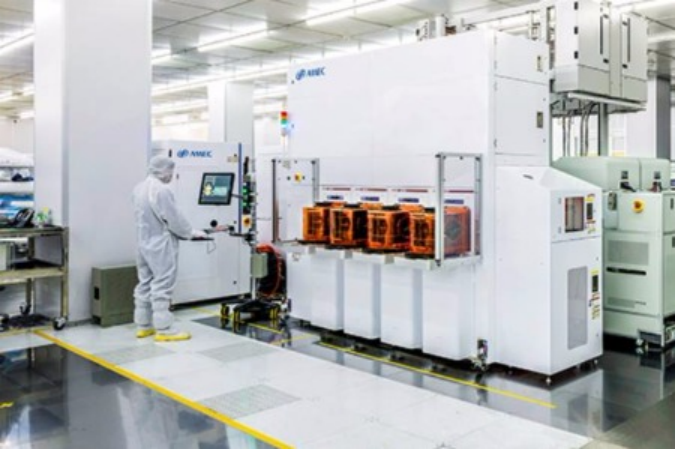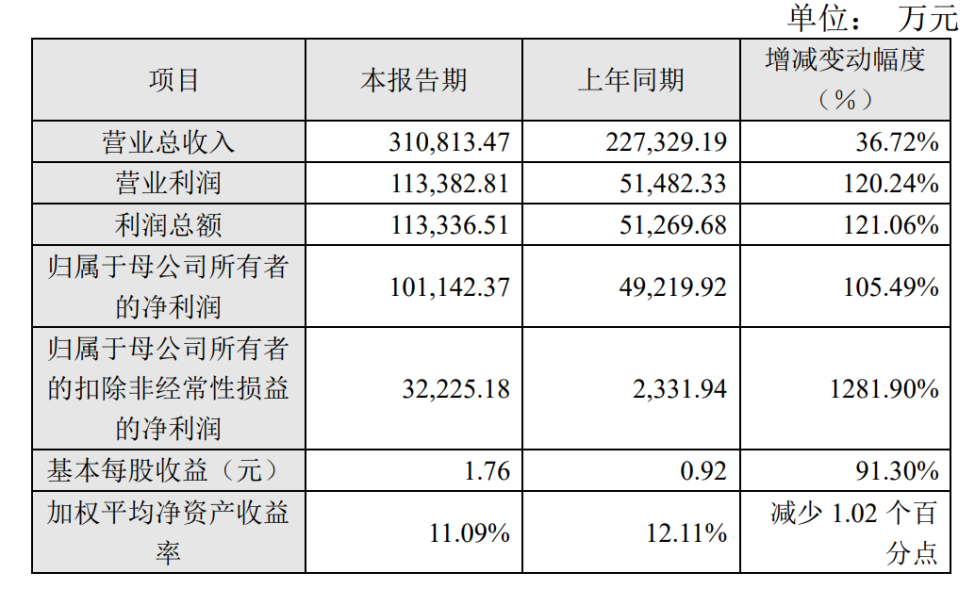2,810 companies, including big names, drive semiconductor sector's fast growth
Chinese carmakers, cloud computing companies and smartphone vendors are branching out into chip design as processors developed in-house become key to differentiating their products and services from those of rivals.
The trend follows a prolonged global chip supply crunch and highlights the importance of chips to both economic recovery from sporadic outbreaks of COVID-19 and future economic growth.
Chinese companies are leveraging the strategic opportunities brought by artificial intelligence, the internet of things and self-driving vehicles to grow their strength in the semiconductor sector.
Gan Jiayue, CEO of Chinese automobile company Geely Holding Group, for instance, said in February that the company is scheduled to produce the country's first automotive 7-nanometer chip in the third quarter of this year.
The chip, called SE1000, is designed by Siengine, a chip joint venture established by the chip company Arm and EcarX, which is owned by Geely Holding Group.
Gan said the chip, designed to support smart onboard features, will be first installed in one of Geely's most popular models, and the company also has plans to produce autonomous driving chips and onboard central processing units in the future.
Prior, another Chinese carmaker Great Wall Motors said in December that it had led a financing round for Chinese chip company Synlight Crystal.
Great Wall Motors did not disclose the specific amount of its investment but said it will help accelerate Synlight Crystal's business development in electric vehicles, thus facilitating the commercialization of silicon carbide material and chips.
The prolonged chip supply crunch has affected more than 169 industries in the world to some extent in 2021, ranging from automobiles, steel products, smartphones and air conditioning, according to a report from Goldman Sachs.
Miao Wei, former minister of industry and information technology, said a lesson from the global chip shortages is that China needs a strong indigenous auto chip industry.
"We are in an age where software defines cars, and cars need central processing units and operating systems. So, we should plan in advance," Miao said last year at a Chinese auto show.
In addition to carmakers, Chinese cloud computing players are jumping on the chip bandwagon. So have the "big three" Chinese internet giants, which have placed bets on the semiconductor sector, attributing their moves to their need to meet their own growing demand for chips.
For instance, Tencent Holdings Ltd's cloud computing business in November unveiled three chips developed in-house. The company said one of the chips is already taped out.
Dowson Tong, senior executive vice-president of Tencent, said the company's investments in chips are driven by the need to solve problems in its sprawling businesses. For instance, video technologies account for an increasingly larger part of its business that spans medical care, education and livestreaming. These business lines need very large amount of computing resources. So, the company developed a tailor-made chip that can support video transcoding more efficiently.
For its part, Alibaba Cloud, the cloud computing business of Alibaba Group Holding Ltd, unveiled a new self-designed server chip based on advanced 5-nanometer technology in October, two years after it unveiled its first chip built in-house in 2019.
Alibaba Cloud said the latest chip is based on micro-architecture provided by SoftBank Group Corp-owned Arm Ltd, and the silicon will be put into use at its own data centers in the "near future" and will not be sold commercially, at least for now.
Jeff Zhang, president of Alibaba Cloud Intelligence and head of Alibaba's research arm Damo Academy, said: "Customizing our own server chips is consistent with our ongoing efforts toward boosting our computing capabilities with better performance and improved energy efficiency. We plan to use the chips to support current and future businesses across the Alibaba Group ecosystem."
Chinese internet heavyweight ByteDance, owner of the popular short-video app TikTok, also said in December that it is marching into the cloud computing business, and its first self-designed AI chip would soon enter trial production.
Yang Zhenyuan, vice-president of ByteDance, said the whole internet world is seeing fundamental changes and internet companies are faster to see the new emerging demand than traditional semiconductor companies.
"We will beef up investments in areas and technologies that change fast in hardware," Yang said, adding that internet companies devote resources to self-designed chips because they want to have advantages in competition and to seek cost-effective performance.
Such a desire has also spurred many Chinese phone makers to invest in semiconductors. Oppo, for instance, unveiled its first self-developed chip in December, joining the ranks of international peers such as Apple and domestic counterparts such as Huawei and Xiaomi to have more control over its own semiconductor design.
Oppo's chip-MariSilicon X-is a neural processing unit, or NPU, which can assist in enhancing images by leveraging the power of artificial intelligence. MariSilicon X is expected to sharpen Oppo's technological prowess as competition in the global smartphone market intensifies.
Chen Mingyong, founder and CEO of Oppo, said MariSilicon X was unveiled after three years of research and development. Built on 6-nanometer process technology, it is a dedicated imaging NPU designed to meet growing consumer demand for better mobile imaging technologies.
Chen further said the experience of developing in-house chips is destined to be bumpy. The chip's name tells a story. Mariana is the deepest trench in the world, implying the difficulty of developing in-house chips. But MariSilicon X is just the first step and the company will continue to invest resources in chip R&D with a team of thousands, Chen said.
Fu Liang, an independent telecom analyst, said the move is of long-term significance for Oppo and will increase its competence amid the cutthroat competition in the smartphone sector, as underlying chip technologies are widely seen as crucial for hardware companies.
The chip industry, he said, has always been capital- and technology-intensive. The investment by domestic mobile phone companies in this field is just a starting point.
China has seen an upsurge in chip design companies in recent years. Wei Shaojun, chairman of integrated circuit design branch of the China Semiconductor Industry Association, said China has more than 2,810 chip design firms as of 2021, marking a 27 percent year-on-year surge, and 2021 was the second year to see double-digit growth.
Huang Qing, China managing director of Walden International, a US venture capital company focused on cross-border investments, said earlier: "As the US government moves to tighten export of key technologies including premium processors to Chinese companies, China is facing an unprecedented opportunity to build up its chip capabilities."
Given US export controls, Chinese firms have begun to feel an urgent need to work with domestic semiconductor companies, and they also devote more resources to self-designed chips, Huang said. "By serving such tech giants, Chinese chip companies have an unprecedented opportunity to grow into global players."
Pan Jianyue, founding partner of SummitView Capital, a Chinese investment company, said there are still many weak points in China's chip industry, including raw materials, manufacturing equipment, chip design tools, and the lack of crucial intellectual properties.
However, the wider use of AI as well as the increasing popularity of internet of things applications and self-driving vehicles will spawn a new wave of computing brands and chip companies, analysts and investors said.
Shen Ziyu, CEO of Siengine, the chip joint venture of Geely and Arm, said Huawei and Apple are shining examples in the smartphone industry as they have allocated heavy resources for self-designed chips.
Similarly, by emulating peers in the automobile and other industries, companies should develop their own products that are globally competitive and popular, Shen said.


